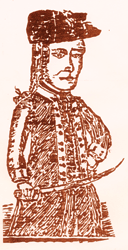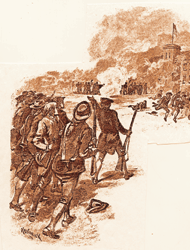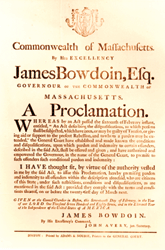
Bridge Street Cemetery Northampton Architecture Historic Markers 
|


Shays' Rebellion
 |
| Contemporary woodcut of Daniel Shays, c. 1787 |
During the years 1786 and 1787, a series of confrontations took place between desperate debtor-farmers and state government authorities in western Massachusetts. The events that became known as Shays' Rebellion came to symbolize the widespread discontent manifested throughout New England during the economic depression that followed the American Revolution.
 |
| Daniel Shays, with about 1500 indebted farmers, attacked the Springfield Armory in 1787. |
In August 1786, a group of 1500 farmers marched on Northampton to prevent the courts from hearing foreclosure proceedings. In September, an armed force led by Revolutionary War veteran Daniel Shays of Pelham closed the courthouse at Springfield. By January 1787, the situation had become desperate. Daniel Shays led the main body of a large group of armed insurgents to confiscate arms and ammunition stored in the arsenal at Springfield. They were opposed by about 1200 militia under the command of General William Shepard. Shays advanced, expecting reinforcements that never came.
 |
| Governor James Bowdoin offered a pardon to those insurgents who would lay down their arms. |
The Rebellion, however, left its mark. Reforms in line with Shays' demands were enacted after the next election turned his opponents out of office. But of larger significance, it put into sharp relief the crisis of government posed by the Articles of Confederation. To discontented farmers, the government seemed unresponsive to the will of the people. To merchants and creditors, the government seemed vulnerable to anarchy. Shays' Rebellion crystallized these issues precisely at the time when the states were choosing delegates to attend the convention that was to draft the Constitution of the United States.
Contents Historic Northampton.